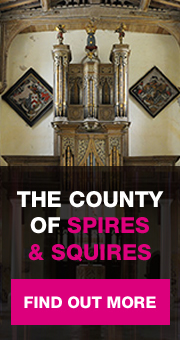The early history of this town is bound up with Christianity and Saxon England. St Wilfred died here in 709 and St Cetta, a 7th century devout, was reburied here in the 10th century.
The great Benedictine Abbey of Peterborough which flourished in the 7th century, sacked in the 8th and refounded in the 9th, established a Minster here (the Saxon remains of which form part of the present Parish Church).
From the earliest times Oundle was a market town, well established by the Conquest. These two qualities still characterise the town today – a place of scholarship (synonymous with Oundle school) and a busy market town unalloyed by industry.
Today it is the fine stone buildings (of creamy Barnack stone) that form the background to one of the handsomest towns in the county. It has a sense of it’s own worth and supports a fine array of shops, cafes and hotels including two that date back to the 17th century – The Talbot Inn (1621) and The White Horse (1641).
North, in West Street, you will discover the finest 17th century house here, Copthorne, opposite the Town Hall. This was built for Oliver Cromwell’s Lord Chamberlain, General William Boteler. It is now the headmaster’s house for Oundle school.
Two significant religious buildings; the magnificent exterior of St Peters Church which has in it a 15th century brass eagle lectern like that in Urbino Cathedral. The School Chapel by A.C. Blomfield, 1922-23 with it’s famous stained glass designed by John Piper.
This is a town to walk around, to be surprised by and to enjoy – plenty of shops and cafes and a bookshop to browse in in Market Place. Not surprising there are festivals here – including the Oundle International Festival www.oundlefestival.org. There is also the Oundle Food Festival and nearby at the village of Ashton, the World Conker Championships which takes place annually on the second Sunday in October.
Oundle for Organists runs courses throughout the year and Music in Special Places is also run through the International Festival organisation.







